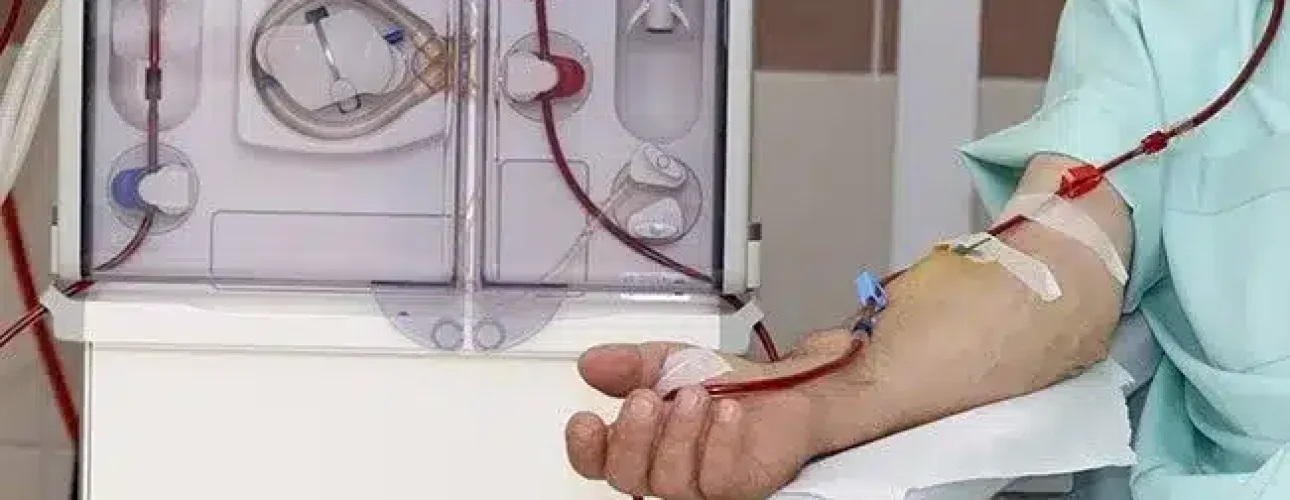If you are living with End Stage Renal Disease (ESRD), when your kidneys can no longer perform the functions they are meant to perform, you will require a vascular access in order to receive lifesaving dialysis treatments. You are also a candidate for an access when your Chronic Kidney Disease (CKD) has reached stage 3 or 4 and your physician recommends having an access placed in preparation for ESRD and dialysis treatment.
Access creation of an arteriovenous fistula or arteriovenous graft for hemodialysis is a minor surgical procedure that can be done in an outpatient setting and does not require hospitalization. A vascular surgeon will perform the procedure and whenever possible will construct the AV Fistula access using only one incision and the AV Graft access with only two small incisions.
Access creation is a minor surgical procedure that can be done in an outpatient setting and does not require hospitalization.
What is an arteriovenous fistula?
An Arteriovenous Fistula (AV fistula, AVF) is an artificial connection between a native artery and a vein, usually in your arm, for hemodialysis treatment. Veins normally do not have enough blood flow nor are they large enough to accommodate the needles needed during dialysis. Arteries, however, have a high blood flow and are large but have rigid vessel walls and are much deeper beneath the skin. When an AVF is created, an artery is connected to a vein which allows the connected vein to have higher blood flow and will eventually enlarge; making it the perfect conduit for hemodialysis.
What is an arteriovenous graft?
An Arteriovenous Graft (AV Graft, AVG), which uses a synthetic tube to connect a vein to an artery for dialysis access. Those who have smaller veins may not be a candidate for a native AVF creation, and so a graft is the alternative. The benefit of having an AV graft placed is that they take less time to be deemed ready for use during dialysis. However, grafts have a higher risk of infection compared to a native AVF.
What is a venous catheter?
A Venous Catheter (central venous catheter, perm cath) is always an option when AVF and AVGs options are not available to the patient at that point in time. The venous catheter is a plastic tubing which is inserted in through the skin, usually in the neck and in through the jugular vein. Because this type of dialysis access involves a foreign body being placed into the body and remains exposed outside the body, it inherently carries a higher risk of infection. Patients and their caretakers must take care to keep the catheter clean and dry.
Preparing for dialysis access surgery
When preparing for access placement, you and your physician will work together to choose an access site. This process is called vessel mapping. Vessel mapping includes taking a history of any past peripheral artery disease, a test to determine blood flow rate (testing done with ultrasound, venogram, or x-ray) and an analysis of the depth and size of the veins and arteries.
Your physician will provide you with specific instructions to follow prior to the procedure. For example, you may need to fast for 8 hours before the procedure or limit or stop certain medications that could create complications.
What to expect during your access placement
During access placement, the physician may give you medication to moderately sedate you, and then a local anesthetic will be used to numb the area where the access is created. Most accesses are placed on the forearm of your non-dominant arm. Typically, patients can go home the same day after the procedure. The procedures for fistulas versus a graft are similar, but have some specific differences.
What to expect after the procedure
Once the procedure is complete, you will be told to initially keep the access raised above the level of your heart to reduce both swelling and pain at the access site. Your physician may prescribe a pain killer if needed to manage pain. Initially you may feel numbness of the hand, but these symptoms should subside in a few weeks as your circulation regulates.
Suggested tips to follow after dialysis access surgery
- DO NOT soak or scrub the surgical site until fully healed.
- DO NOT lift anything weighing 15 pounds or more, andavoid any activities that would compress the access site.
- DO make sure to call your physician if you have bleeding, drainage or a fever above 101 degrees Fahrenheit.
- DO keep your incision dry for a minimum of 2 days post-procedure.
Taking care of your access
Your access is your lifeline. Without it, there is no way to reach and clean your blood when your kidneys no longer function adequately. Dialysis access care should be a top priority. Properly caring for your access results in fewer problems, and a better functioning and longer lasting access, leaving you feeling better!
Schedule an appointment today
At Vascular Care Specialists of Los Angeles, we strive to provide the best service, care, and results possible. If you have end-stage renal disease with dialysis access related problems, give us a call at 626-275-9566 to schedule an appointment. You can also visit us at www.vcsla.com for more information.
